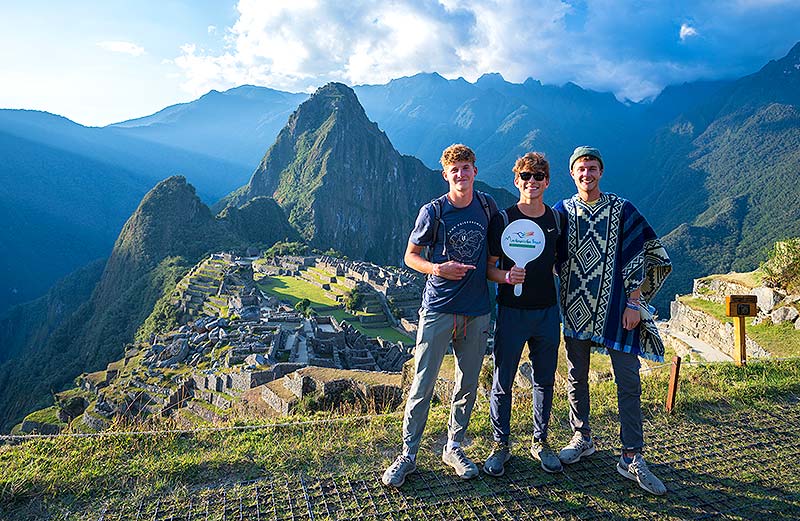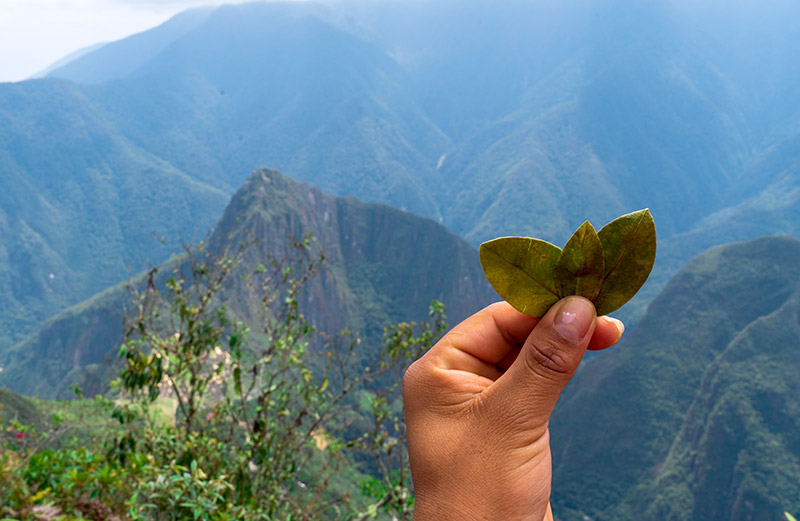Machu Picchu – Is acclimatization necessary?
The visit to Machu Picchu for some people can be complicated, due to the altitude at which it is located. Although in general, they will not present an acute discomfort, as in other destinations in Cusco or in Cusco itself. Machu Picchu is located at 2,430 meters above sea level. This altitude can cause some, but slight problems. Therefore, to avoid the discomfort of altitude sickness we want to talk, throughout this article, about some symptoms of altitude sickness, how to solve it, and what measures to take. This is because we know of the multiple options to reach Machu Picchu, and taking advantage of the fact that you will be in Cusco, it is possible to visit other destinations.
The main symptoms of altitude sickness
Altitude sickness is characterized by different symptoms. The main reason for this discomfort is the change in altitude suffered by the tourist or traveler. Few regions in the world have populations above 2000 meters above sea level. The great majority of cities are located near the coasts, therefore, they have low altitudes. In places near the sea or coastal areas, more oxygen can be found. In short, oxygen is abundant, while in towns or cities at higher altitudes, the opposite is true.
In cities above 2,000 meters above sea level, a lower oxygen density can be found compared to cities close to sea level. This scale is gradual, as you move away from sea level there is less oxygen. In this sense, the bodies of these people will experience some changes due to the lower amount of oxygenation. This will end up altering their whole body in different ways, especially at the moment of distributing oxygen to the whole body. It is from this lack of oxygen that the symptoms or discomforts of altitude sickness or soroche begin to be felt. The main discomforts that can be found or to identify altitude sickness are:
- Headache, the headache begins in a latent form, that is to say, it is felt at times and at times not. It is as if it were a warning for the future. As the body is exposed to the low amount of oxygen the pain becomes more acute, mainly because it does not have or does not get much oxygen to the brain.
- Tiredness, this discomfort is often associated with irritability. The tourist, not understanding exactly his or her sorrows, generates some uncomfortable and even aggressive responses to his or her peers. Fatigue can also be confused with certain muscular pains and a lack of desire to continue an activity or similar.
- Nausea. Nausea appears precisely because of the decompensation that the body is experiencing. In addition to this discomfort, there is also a lack of appetite. This is a normal reaction to so much discomfort.
- When the problem worsens, cases rarely seen in Cusco, symptoms such as respiratory difficulty, confusion, and even total disorientation of the patient begin to be experienced and expressed.
- More extreme cases already lead to frothy and pink vomiting. These cases should be treated immediately. Many of these cases even provoke coma in the patient. However, there are no records of these cases in Cusco and much less in Machu Picchu which is at a lower altitude.
Do I need to acclimatize to go to Machu Picchu?
Machu Picchu is located at 2 430 meters above sea level. It has a lower altitude compared to Cusco which is over 3 399 meters above sea level. In this sense, it is likely to have the first symptoms that we detailed in the previous section. This, of course, on arrival in Cusco. It is normal for those arriving in Cusco to have some of the discomforts we have mentioned. However, in none of the cases we experienced a negative evolution.
In addition, many of these cases can be solved or disappear with the passing of the hours. Now, we want to explain in which cases you would need to acclimatize your intention to visit Machu Picchu. The first reason is if, in the activities to follow, you are planning to do the trekking routes such as the Inca Trail 4 days, Salkantay Trek, and the Choquequirao Trek. These routes, for some stretches and even days, cross altitudes of more than 4,000 meters above sea level. In case you are thinking of doing this route it is necessary to acclimatize at least a couple of days in Cusco.
Suppose the intention is only to visit Machu Picchu for one day and then start the return trip. It is not necessary to make an acclimatization, on the contrary, even making the journey to Machu Picchu with some discomfort, will be relieved during the trip. This is because the lower the altitude, the higher the oxygenation. To make the trip to Machu Picchu is not necessary to acclimatize as such unless you are thinking of doing the trekking routes. On the other hand, if you are planning to do other routes or visit other destinations that have higher altitudes than Cusco, you must have an acclimatization plan.
In Cusco, you can make several activities of simple tours for different attractions within Cusco and after making a short trip. For example, you can visit the Sacred Valley of the Incas, and the South Valley, and visit the churches. You can even do the City Tour. All the activities that we mentioned will take you to archaeological sites without the need to make strong or long walks. That is to say, they are ideal to get to know, distract, and acclimatize. Now let’s know some important measures to have a good acclimatization.
Coca leaf facts
The coca leaf is widely consumed in Peru and has an ancestral use, where it is considered one of the most important and sacred plants. Several ancient cultures consumed it only by the elite, some priests, and the cheques to cover long distances running. The coca leaf has stimulant properties of the central nervous system, it is also efficient as an antiviral, and although in smaller quantities it also has anesthetic properties. Therefore, it is perfect for fighting altitude sickness.
Main alternatives or ways to avoid altitude sickness
Drink plenty of fluids. One way to avoid decompensation due to altitude sickness is to hydrate adequately. Drinking water will help you relax your muscles and internal organs since they will be hydrated and the discomfort will not feel too heavy.
Coca leaf. Coca-leaf is highly recommended for all those who begin to feel some discomfort. The way to consume the coca leaf is direct or as an infusion. When we say direct, we mean chewing it until it forms a ball. In the case of infusions, put a good handful of leaves in a cup and pour hot water directly over the leaves, let stand for a moment, and drink it. The coca leaves must be previously dried. They usually offer this product in hotels. Another option is to consume coca candies.
Take short walks. Short walks will help you relax. In the previous section, we mentioned some alternatives that can be perfectly suited to this advice. You can also do night walks in Cusco visit the museums or just walk the streets and the Plaza de Armas of Cusco.
Keep calm. We know that the discomforts are terrible. However, it is important to be calm and not fall into despair or anguish that the symptoms may worsen. It is necessary to recognize why our body is experiencing all these physiological changes. If the person recognizes these discomforts and identifies the causes, he or she will feel better more quickly. He or she will also avoid unnecessary alerts.
Do not overdo physical exercise. There have been cases in which people felt good and began to climb mountains with great speed. When they became agitated, they required more oxygen and caused some discomfort, and even doing this can cause more discomfort. That is why it is recommended to take it easy and do simple routes to acclimatize.
Visit the doctor. The visit to the doctor is only to have permission or medical consultation so that older adults can make the trip without problems and with the necessary medication, in case they need it. On the other hand, you can make these consultations with your doctor to feel more confident when making the trip.
Other recommendations
Visits to Machu Picchu are usually quite crowded. In addition, the daily admission capacity has a limit. In this sense, it is important to make the ticket reservations in advance. This will also help you to avoid falling into scams. On the other hand, having a ticket to Machu Picchu on a certain date will help you to better plan all the activities you can do before or after visiting Machu Picchu.
Although Machu Picchu is located at 2,430 meters above sea level, it has a semi-tropical climate so you will find a large presence of mosquitoes, a temperature above 14°C, and the likelihood of sudden rains. In the case of December to March, the probability of rain increases considerably. That is why it is recommended to bring a waterproof poncho.
In the case of mosquitoes, it is always recommended to have a repellent. These small insects have the right climate to live in the entire geographical area of Machu Picchu. However, a good repellent is enough to avoid their bites. Mosquitoes will be present throughout the year. On the other hand, during the trekking routes to Machu Picchu, mosquito repellent should be used in addition to a good sunscreen for skin care.

